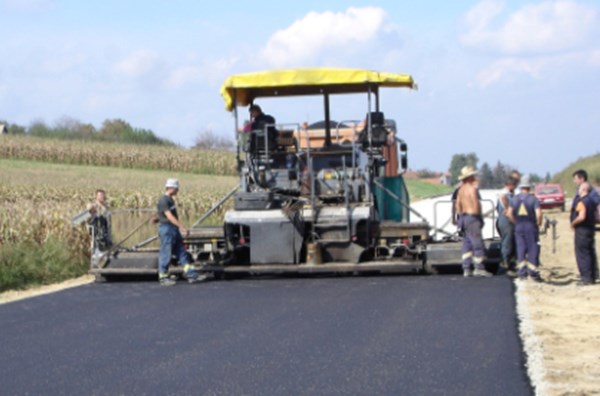Build and manage better road networks
- Home
- HDM-4 Version 2
- HDM-4 In Use
- Australia
- Road investment strategies for Queensland
Road investment strategies for Queensland
Submitted by Tyrone Toole, ARRB
Meeting the future investment needs for the maintenance and rehabilitation of the National Road Network is important to the Queensland economy and road users, and was the subject of a study undertaken with the support of HDM-4 (Toole 2008).
The study drew on QDMR’s extensive information on road characteristics, road works history, traffic and current maintenance costs. This was supplemented by structural surveys of the entire network, and a detailed review of road conditions and treatment needs on a representative sample of roads.
Comparison across a range of alternative maintenance strategies was made possible by determining the total transport costs, comprising the sum of road agency costs and road user costs, associated with each strategy, and for the base scenario (the Current Funding Policy). Optimum maintenance strategies, with an objective functions based on maximising the present value of TTC savings (or NPV), was also investigated. By choosing to investigate the consequence of existing business rules this provided an insight to both the economics of the typical engineering rules, and their affordability.
The current condition was assessed in terms of network length exceeding the target maximum surface age, ride quality, % of network with no rehabilitation over the last 20 years and % assessed as being a high structural risk. The former two indicators are national reporting measures, termed the Preventative Maintenance Indicator (PMI) and the Ride Quality Indicator (RQI) and therefore provide a transparent basis for assessing current and future performance (Austroads 2009).
Future maintenance and rehabilitation funding needs were estimated over a 30 year period using HDM-4 with the models configured and calibrated to Queensland conditions. This was possible due to its extensive application in the state, with the department’s internal tool also using HDM-4 based aggregate models.
Estimated needs in the first five years of the proposed investment program were estimated to be some 3.6 to 4.8 times the current level of funding, and some 4 to 6 times higher than current annual allocations from year 6 onwards.
The net economic benefits of the alternative strategies (which all involved increases in funding) were found to be between $2 and $3 for every additional dollar spent. Net discounted road user cost savings of between $3 billion and $3.5 billion would accrue over a 20 year period should any of the alternatives be implemented.
The implications of delaying the implementation of the alternative strategies for, say, up to five years ahead or restricting new funding to the most important roads was also investigated. However, should this happen, the backlog would continue to grow, treatment costs would be more expensive, and costs to users would increase.
Particular features of the HDM-4 analysis included:
-
Analysing approximately 5,440 1 km long road segments, this being chosen to remove the averaging effects of selecting representative or homogenous sections
-
Maintenance standards including desirable intervention levels with no segment in a poor (RQI) condition, minimum standards with no segment in a very poor condition and the department’s standard rules
-
Road deterioration calibration factors which varied by location, based on soil type and climate, and traffic level
-
Road user costs calibrated to Australasian conditions based on extensive research
-
Incorporation of annual average maintenance costs per road segment to reflect the true cost of holding treatments, with typical long term average maintenance cost rates applied post rehabilitation with the latter being approximately 1/10th those of the worst performing sections
-
Use of the strategy analysis module with an unconstrained budget.
Aspects of the study which benefitted the presentation and interpretation of the data included:
-
Mapping current and future conditions, and maintenance costs
-
Presenting future trends in terms of RQI and other indicators
-
Estimating treatment coverage, as % of network per year, and comparisons with other states
-
Reporting direct impacts on road users in terms of changes in vehicle operating costs in cents/km
-
Presenting the work program outputs (by region) in a simple tabular format, with accompanying condition summaries and maps to aid field review and program development.
This, along with analysis results provided a credible, visual basis to assessing current and future conditions, with the analysis being responsive to some of the key factors found to affect performance on a geographical basis noting the diversity in operating conditions from hot arid regions, to wet, humid conditions on the coast and in tropical regions.

| State | Resurfacing | Rehabilitation |
| Tasmania | 6.5 | 2 |
| Victoria | 7 – 8.5 | 0.5 – 1.5 |
| Western Australia | 7.7 | 1.7 |
| Queensland (Strategy 02 - this study) | 9.5 | 1.7 |
References:
Austroads 2009, Asset management series: part 5H: Performance Modelling, Sydney, AGAM05H-09, Austroads, Sydney, NSW.
Toole, T 2008, ‘Development of a pavement rehabilitation strategy for national roads in Queensland’, Main Roads Engineering Technology Forum, 14th, 2008, Brisbane, Queensland, Australia 2008, Queensland Department of Main Roads, Brisbane, Queensland.
Download PowerPoint presentation in PDF format...
-
Find out about the technical support service offered by HDMGlobal to help users use HDM-4 effectively.
-
For existing HDM-4 users, view the latest software release and the changes made before registering to receive the updates.
-
Find out about HDM-4 training courses offered by HDMGlobal and their partner organisations and other related events.








